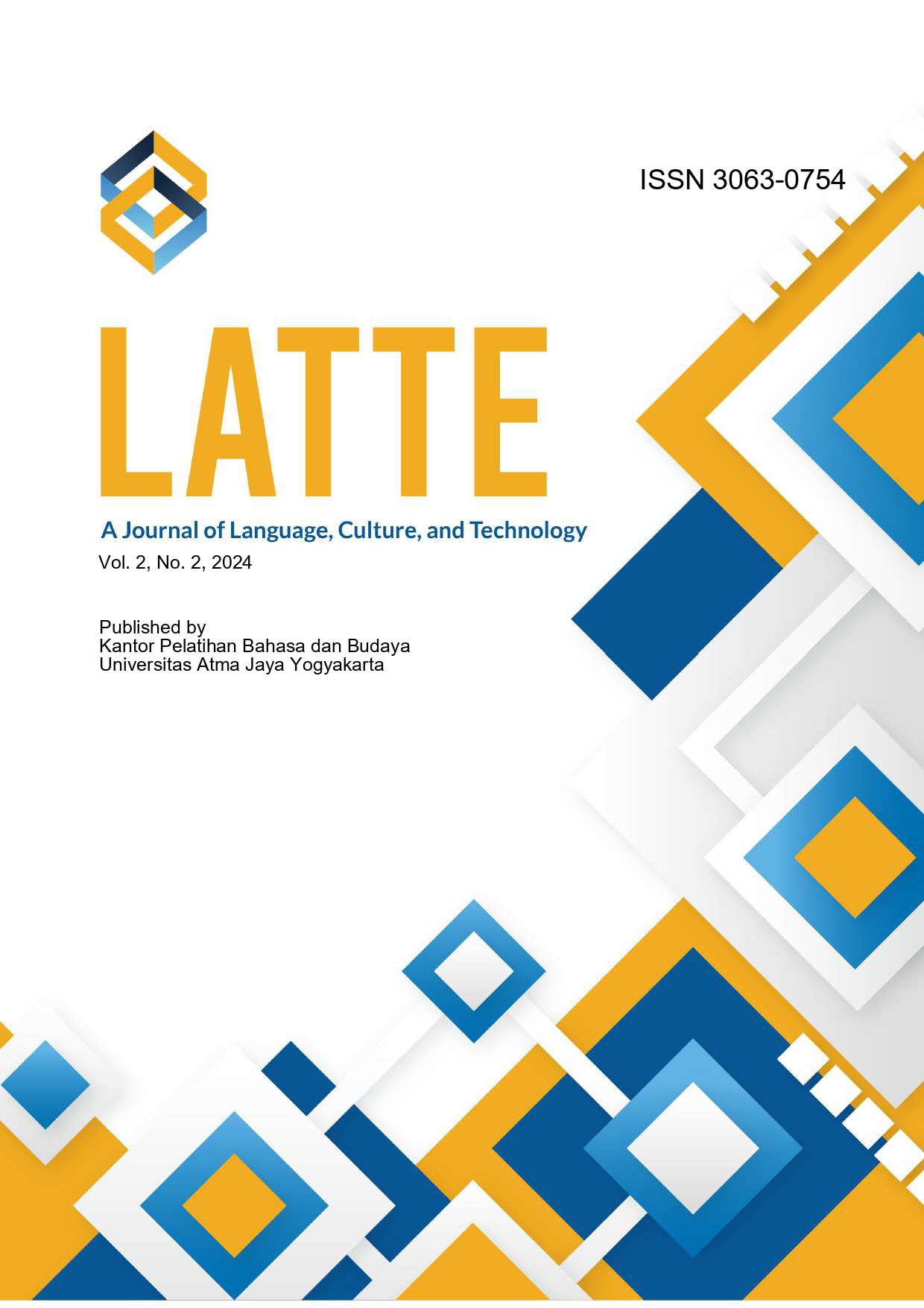THE ANALYSIS OF MAXIMS IN “HARRY POTTER AND THE DEATHLY HALLOW PART 1” MOVIE
DOI:
https://doi.org/10.24002/lj.v2i2.10996Abstract
This study examines the application of Grice's maxims in the movie "Harry Potter and the Deathly Hallows Part 1," emphasizing their role in ensuring effective communication. Grice's Cooperative Principle suggests that conversations should follow four maxims: quality, quantity, relevance, and manner, to facilitate clear and meaningful exchanges. However, these maxims are not always followed, leading to misunderstandings and misinterpretations. This study identifies instances where characters either fulfil or violate these maxims and analyses the effects of these violations on the overall communication process. Employing a qualitative descriptive method, the research collects and examines dialogues from the movie to categorize instances of adherence and violation of Gricean maxims. The findings indicate that violations of maxims often occur for humorous, dramatic, or deceptive purposes, affecting the audience’s perception and interpretation of dialogues. Characters such as Dobby, Ron, and Kreacher frequently violate maxims of quantity, relevance, and quality, either by providing excessive information, deviating from the topic, or delivering untruthful statements. Conversely, characters like Mad-Eye Moody and Lupin exemplify the fulfilment of maxims, ensuring clarity and coherence in conversations. The study contributes to the understanding of pragmatics in cinematic dialogue and highlights how filmmakers use language strategically to shape character interactions. The findings suggest that the violation of conversational maxims in movies is an intentional linguistic tool that enhances storytelling and audience engagement.
References
Aspers, P., Corte, U. What is Qualitative in Qualitative Study. Qual Sociol 42, 139–160 (2019). https://doi.org/10.1007/s11133-019-9413-7
Astini, N. W. S., Candra, K. D. P., & Marantika, I. M. Y. (2023). The analysis of flouting Maxim in Raya and The Last Dragon Movie. Traverse, 4(2), 255–262. https://doi.org/10.22334/traverse.v4i2.81
Cutting, J. (2002). Pragmatics and Discourse: A Resource Book for Students. London: Routledge.
Damayanti, S., & Johan, M. (2021). Types of Maxim in Moana movie. Humanitatis: Journal of Language and Literature, 8(1), 23–34. https://doi.org/10.30812/humanitatis.v8i1.1310
Devi, R. S., & Ambalegin, A. (2022). Flouting Maxim types found in “Thor Ragnarok” movie. Humanitatis: Journal of Language and Literature, 8(2), 249–260. https://doi.org/10.30812/humanitatis.v8i2.1648
Erdayani, E., & Ambalegin, A. (2022). FLOUTING MAXIMS IN “FANTASTIC BEASTS: AND WHERE TO FIND THEM” MOVIE. Jurnal Basis, 9(1), 41–50. https://doi.org/10.33884/basisupb.v9i1.4590
Grice, H. P. (1989). Studies in the way of words. https://ci.nii.ac.jp/ncid/BA06871034
Kurniadi, S. (2021). A GRICEAN MAXIM ANALYSIS IN TEACHING AND LEARNING PROCESS AT HIGHER LEVEL EDUCATION. Inotera, 6(2), 112–118. https://doi.org/10.31572/inotera.vol6.iss2.2021.id145
Grundy, P. (2000). Doing Pragmatics (2nd ed.). London: Arnold.
Putri, D. A., & Apsari, Y. (2020). THE VIOLATION OF GRICE’S MAXIM IN “BAD GENIUS” MOVIE. Project (Professional Journal of English Education), 3(6), 743. https://doi.org/10.22460/project.v3i6.p743-750
Ramadhanisya, R., & Hartati, S. (2021). Flouting Maxim in SpongeBob movie: Sponge on the Run. Journal of English Education, 1(3), 173–179. https://doi.org/10.30998/jedu.v1i3.5969
Rohmanti, K. a. P., & Pradika, B. G. (2018). AN ANALYSIS OF FLOUTING MAXIMS IN ”COCO” MOVIE. Project (Professional Journal of English Education), 1(5), 657. https://doi.org/10.22460/project.v1i5.p657-663
Sari, D. F., Nuraini, L., & Muthalib, K. A. (2019). AN ANALYSIS OF MAXIM VIOLATIONS IN a MOVIE AND THEIR IMPACTS ON EFFECTIVE COMMUNICATION. Proceeding of the International Conference on Literature, 1(1), 711–720. https://doi.org/10.24815/.v1i1.14532
Serlin, S. (2017). An analysis of violation of cooperative principle in Alice in Wonderland movie script. journal.fib.uho.ac.id. https://doi.org/10.33772/elite.v2i2.1017
Setiawan, F. A., & Haryani, H. (2020). An analysis of Maxim Flouting in Pokémon: Detective Pikachu Movie. Project (Professional Journal of English Education), 3(2), 224. https://doi.org/10.22460/project.v3i2.p224-230
Thomas, J. (1995). Meaning in Interaction: An Introduction to Pragmatics. London: Longman.
Widiantari, N. M. A., Pratiwi, D. P. E., & Sekolastika, M. P. (2022). Flouting of maxims in finding Dory movie. e-Journal of Linguistics, 16(2), 284. https://doi.org/10.24843/e-jl.2022.v16.i02.p13
Wulantari, N. P. A., & Maharani, P. D. (2023). Exploring Maxim Flouting in “A Man Called Otto” movie: A Pragmatic study. JL3T (Journal of Linguistics, Literature and Language Teaching), 9(2), 169–181. https://doi.org/10.32505/jl3t.v9i2.7045
Yustika, L. S., Setiawan, S., & Retnaningdyah, P. (2022). Flouting Maxim in “The Hundred-Foot Journey Movie”: An opportunity to improve students’ intercultural literacy. Journal of Pragmatics Study, 4(1), 137–151. https://doi.org/10.18326/jopr.v4i2.137-151
Published
Issue
Section
License
Copyright (c) 2025 LATTE: A Journal of Language, Culture, and Technology ISSN 3063-0754

This work is licensed under a Creative Commons Attribution-ShareAlike 4.0 International License.

